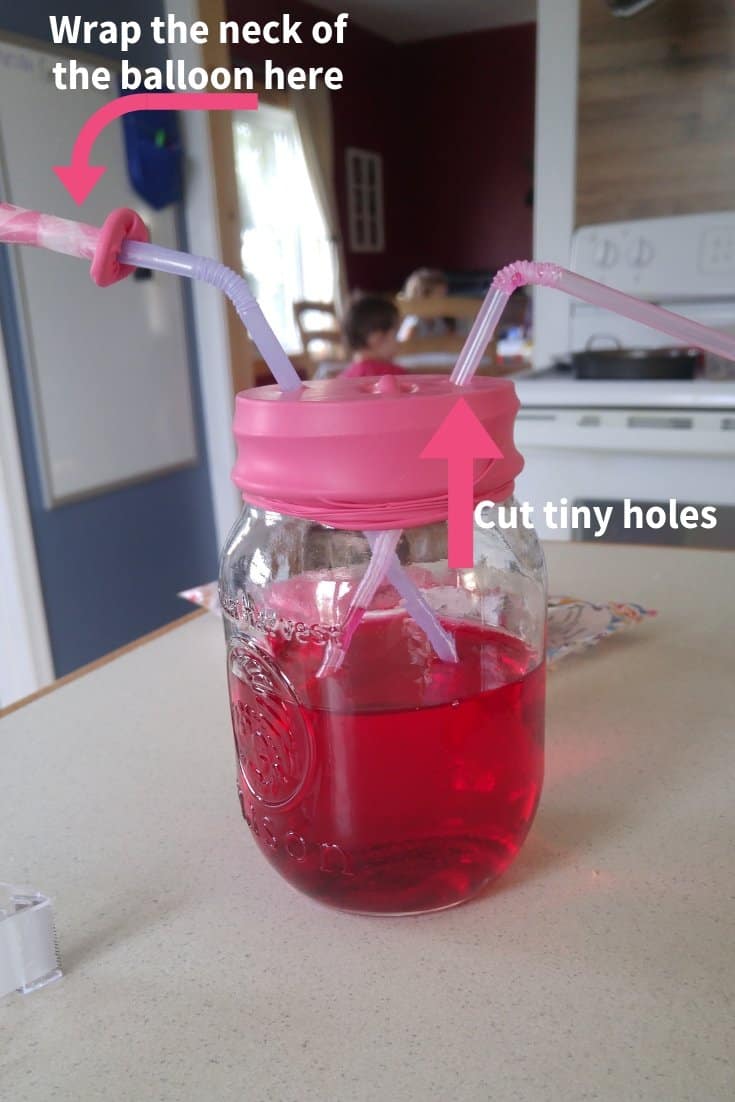This heart-pumping science experiment is easy to set up and have fun with. One of my favorite subjects to teach my kids is science, and one of those reasons is that it can be so hands-on.

This post contains affiliate links, see my disclosure policy for more information.
Heart Pumping Human Body Science Experiment
How do kids learn the best? By involving them, and getting hands-on with science! This real-life method- is a great way for them to learn more about the subjects that we are covering throughout the year.
Over the past couple of weeks, we have been doing human body-related lessons in science. Human body-related science experiments to go along with those lessons just came naturally.
We’ll be continuing this for the next few weeks, we are learning about the human body in our BookShark Science Level 2 curriculum. Some of the things we have been doing along with our curriculum are running in place and then checking our pulse, seeing just how germs stick to our hands with glitter, and more.
Almost everything we have been doing has been included in the science kit that came with our BookShark curriculum.

The book we’re using right now is The Usborne Book of Knowledge. The book goes through the systems of anatomy by showing different machines that can do what our bodies can do. BUT the kicker for them was that there is no one machine that can do everything our body does.
To illustrate one of these machines, thought it would be fun to make a model that pumps blood.
This simple experiment shows how the heart beats to pump blood out of the heart. You probably have everything you already need at home.
What you need:
- a clear jar
- a balloon
- 2 plastic bendy straws
- water
- food coloring (optional)
- tape
- scissors
How to do this Heart Pumping Experiment
Cut the balloon where the neck starts to widen into the balloon. Add a few drops of food coloring to a cup or so of water. The color helps you see the water movement better.
After filling the jar with colored water, stretch the balloon over the mouth of the jar, you want it to be as flat as possible. Cut two tiny holes in the balloon, slightly smaller than your straw holes, about an inch apart.

Take the neck of the balloon and wrap it around the end of one straw. Tape it in place. It doesn’t have to be fancy just enough to prevent water and air from going into or out of that straw.
My straws would not stay uncrossed in the jar, but it does not affect how it works. I would recommend having a pan under your jar or doing this over a sink to contain the water mess.
Now press down lightly onto the balloon you have stretched over the jar mouth. Watch what happens.

My kids were very into what was happening, they were not only asking questions but answering each other’s questions based on what they remembered from our lessons and what we read in The Usborne Book of Knowledge. They were working together, teaching one another what they had learned.
What just happened with these pumping heart experiment:
We made a simple pump that moved water from the jar through the straws and into the pan. The cut end of the balloon worked as a valve or a gate, to stop the water from going back down the straw.
Your heart pumps blood out into your body through your arteries in a similar way. Human hearts have four separate chambers inside. This pump shows how one chamber and its valve work.
You can check out my Instagram homeschool story highlights to see just how this worked.
Find More about the Human Body:
Learning About the Human Body – Elementary Ages: My kids have a fascination with the human body. It started when Austin, my oldest saw me watching Bones. While I don’t think it is for kids, it’s rated PG-14, it got her interested in learning more about bones and the human body in general.
Doctor Robin’s School
Dr. Robin created this curriculum after she realized, as a homeschool mom herself, that there was no biology curriculum out there that didn’t require the parent to learn the curriculum material first before teaching it. You can find our review here.

Heart Pumping Science Experiment
Learn about how a heart pumps blood through the heart and the body.
Materials
- water
- food coloring (optional)tape
- scissors
Tools
- jar
- balloon
- scissors
- tape
- 2 plastic bendy straws
Instructions
- Cut the balloon where the neck starts to widen into the balloon. Add a few drops of food coloring to a cup or so of water. The color helps you see the water movement better. After filling the jar with colored water, stretch the balloon over the mouth of the jar, you want it to be as flat as possible.
- Cut two tiny holes in the balloon, slightly smaller than your straw holes, about an inch apart.Take the neck of the balloon and wrap it around the end of one straw. Tape it in place. It doesn't have to be fancy just enough to prevent water and air from going into or out of that straw. My straws would not stay uncrossed in the jar, but it doesn't affect how it works. I would recommend having a pan under your jar or doing this over a sink to contain the water mess.
- Now press down lightly onto the balloon you have stretched over the jar mouth. Watch what happens.
Similar posts that you may be interested in:
Arctic Animals – Science Experiment
